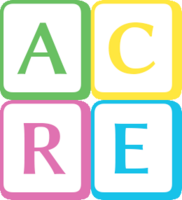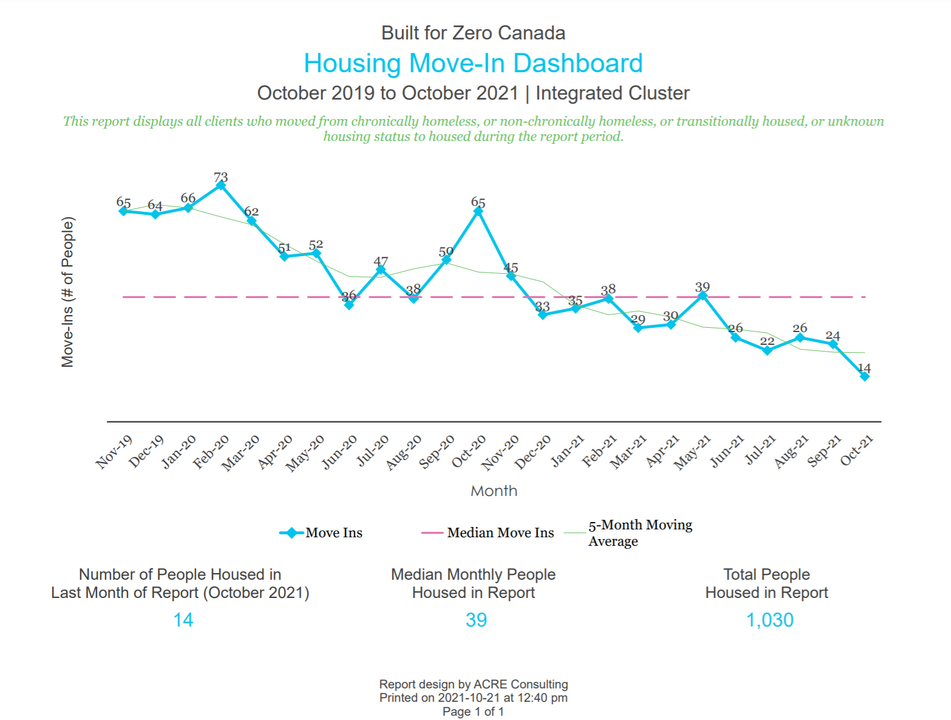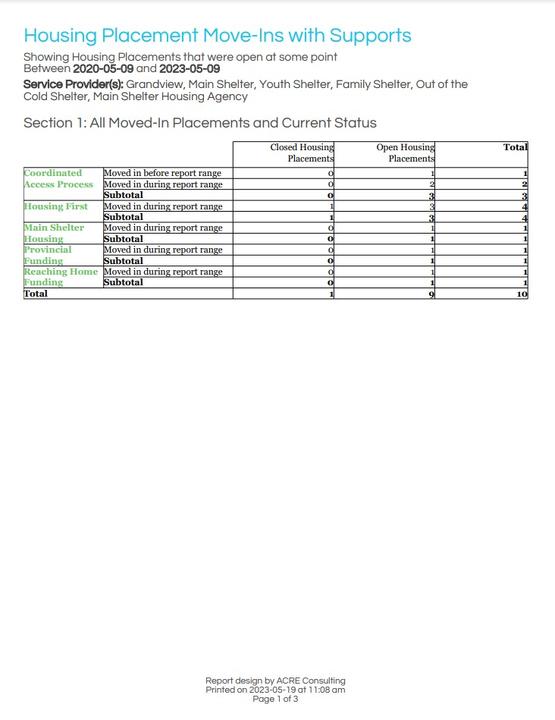ACRE Consulting's Unofficial HPP Report
3. By-Name Lists
This report is intended to allow Ontario communities who receive HPP funding to use HIFIS data to report out on the By-Name List section of the HPP reporting requirements.
Broadly, it reports on the aggregated inflow and outflow to and from your By-Name List (BNL) and breaks down these numbers into the priority population groups.
This is an unofficial report and is not endorsed by the Ontario MMAH.
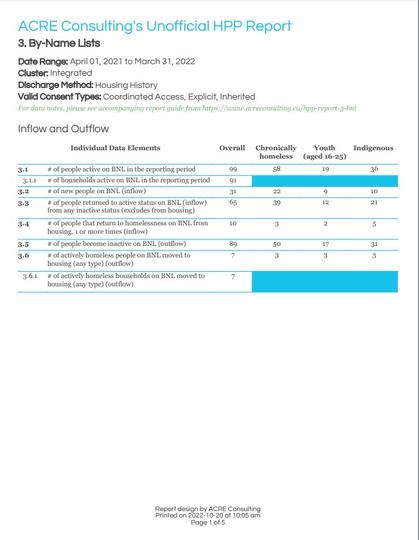


3. Individuals on By-Name Lists
Service Managers are required to maintain a By-Name List (BNL), and part of the HPP reporting requirements are to measure participation in, and inflow and outflow from, the BNL.
Required data elements include:
- people active on the BNL: individuals, households, and priority populations
- new people on the BNL: individuals and priority populations
- returns from inactive: individuals and priority populations
- returns from housing: individuals and priority populations
- moves to inactive: individuals and priority populations
- moves to housing: individuals, households, and priority populations
These reporting requirements are similar to Reaching Home's Community Homelessness Report ↗ and Built for Zero Canada's ↗ monthly reporting, however, they differ in a few subtle ways. The most noticeable way is that neither of the other comparable programs require reporting on discharges from provincial institutions.
Features of this Report
Meet Reporting Requirements
Report features aggregated inflow and outflow data, allowing you to report on data elements 3.1, 3.1.1, 3.2, 3.3, 3.4, 3.5, 3.6, and 3.6.1 for all required reporting breakdowns.
Discharges from Provincial Institutions
Includes 4 methods of tracking discharges from provincial institutions:
- Housing History
- Reason for Service
- Referred From
- Life Events
Client Pool Audit
Includes the ability to audit the clients included in the report before you submit, so you can be sure your reporting is accurate.
Consent Types
Define what consent type(s) are valid for inclusion on the BNL. Choose from: Coordinated Access, Explicit, Inherited, Declined - Anonymous, or No Consent, and choose whether to include those with expired consent.
Frequently Asked Questions
- What version of HIFIS is required to run this report? This report requires version HIFIS 4.0.59.1 or higher to function. There are different versions for 4.0.59 and 4.0.60.
- What happens if the report stops working? This report will be maintained into the foreseeable future. If a software update causes it to stop working, or if we find an error, we'll update the file and let you know there's a new version available, at no additional cost to you.
- How long does this report take to run? This report has one of the longer run-times out there and would be comparable in speed to the federal Community Homelessness Report (CHR), so if that report takes a long time to run for you, so will this.
- What parameters are included in this report? Included parameters are: Start Date; End Date; Consent Types (multiple-select drop-down field); Discharge Module (single-select drop-down field which includes 4 options: Reason for Service, Referred From, Housing History, Life Events); Client Pool (asks if the report should display a list of clients so that you can verify the data); Current Service Provider [hidden]
- How do I run this report? Check out our README file.
- I have a question about the report calculations. Check out our Report Guide.
You may also like...
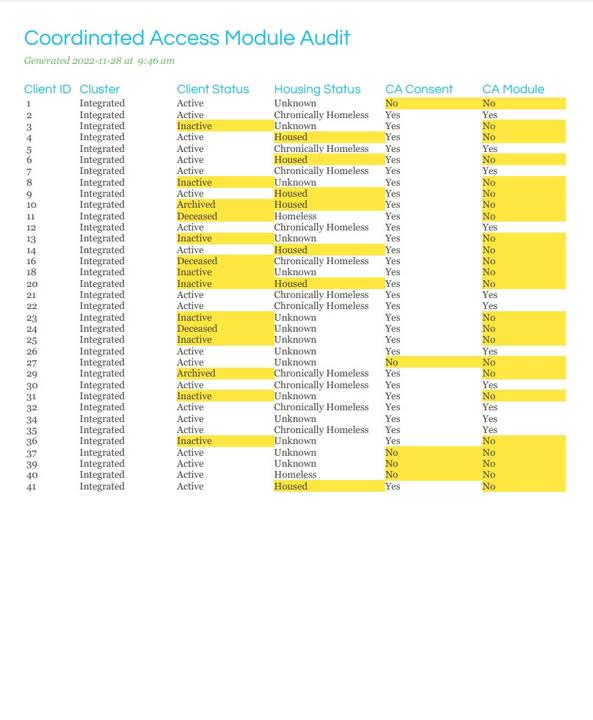
This simple report was comissioned by Lambton County to identify which clients were missing from their Coordinated Access module. It's intended to be exported to Excel and then filtered as needed, and just shows an anonymous list of clients along with their cluster, client status, housing status, Coordinated Access consent status, and whether or not they appear within the Coordinated Access module. Clients who would not appear are highlighted along with the reason they are not appearing.
This simple report was comissioned by Lambton County to identify which clients were missing from their Coordinated Access module. It's intended to be exported to Excel and then filtered as needed, and…
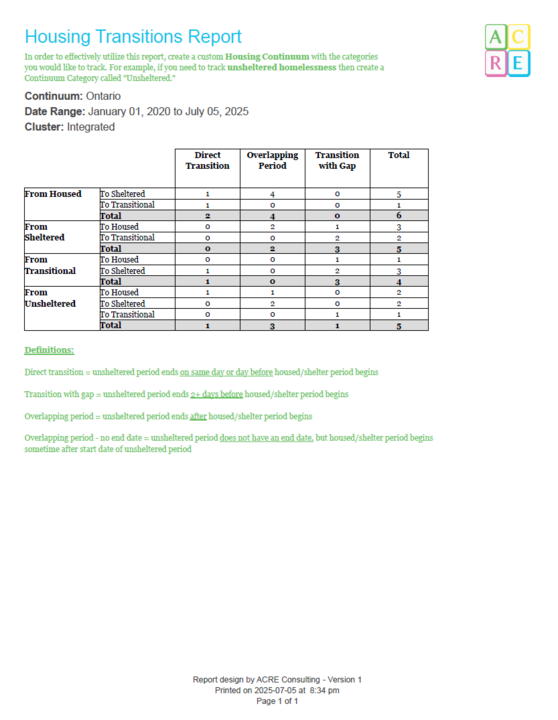
This report identifies and calculates housing transitions, overriding the Housing Status field in HIFIS and looking directly at Housing History and shelter Admissions. Housing transitions are defined as moving from one category in a Housing Continuum to another. If you wish to utilize custom housing categories, add a custom Housing Continuum, which you will be prompted to select when you run the report.
In part, this report is designed to assist Ontario communities required to report on transitions out of unsheltered homelessness.
This report identifies and calculates housing transitions, overriding the Housing Status field in HIFIS and looking directly at Housing History and shelter Admissions. Housing transitions are defined …
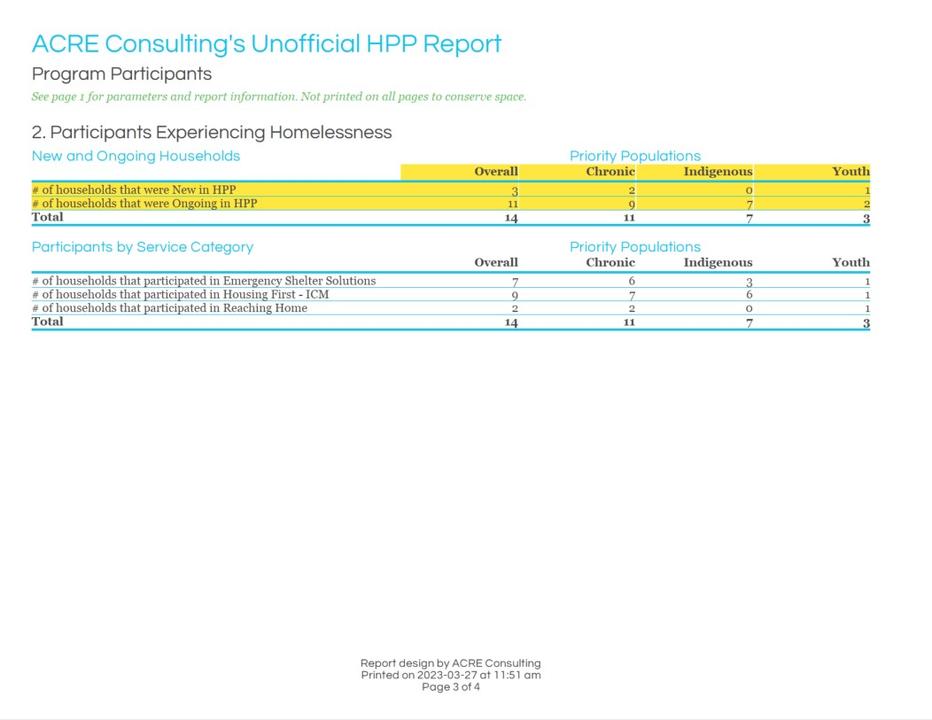
This report is intended to allow communities in Ontario who receive HPP funding to use HIFIS data to report out on the program participants section of the HPP reporting requirements, which encompass the majority of sections 1 and 2. Broadly speaking, the report summarizes data about which households received services associated with which Programs. It also determines the first time the household received a service like it, and from that determines whether the client was homeless or at risk of homelessness at the time, and also whether that means the client was new to HPP or a returning household.
This is an unofficial report and is not endorsed by the Ontario MMAH.
This report is intended to allow communities in Ontario who receive HPP funding to use HIFIS data to report out on the program participants section of the HPP reporting requirements, which encompass t…
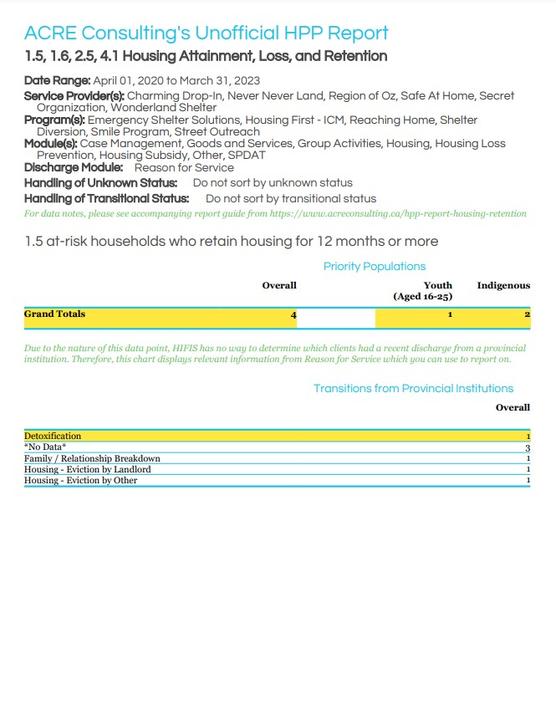
This report is intended to allow communities in Ontario who receive HPP funding to use HIFIS data to report on housing attainment, loss, and retention. Broadly speaking, the report summarizes data about households that had a move-in or retained housing for 12 months or who became homeless, filtered by date range, service providers, programs, and service types.
This is an unofficial report and is not endorsed by the Ontario MMAH.
This report is intended to allow communities in Ontario who receive HPP funding to use HIFIS data to report on housing attainment, loss, and retention. Broadly speaking, the report summarizes data abo…
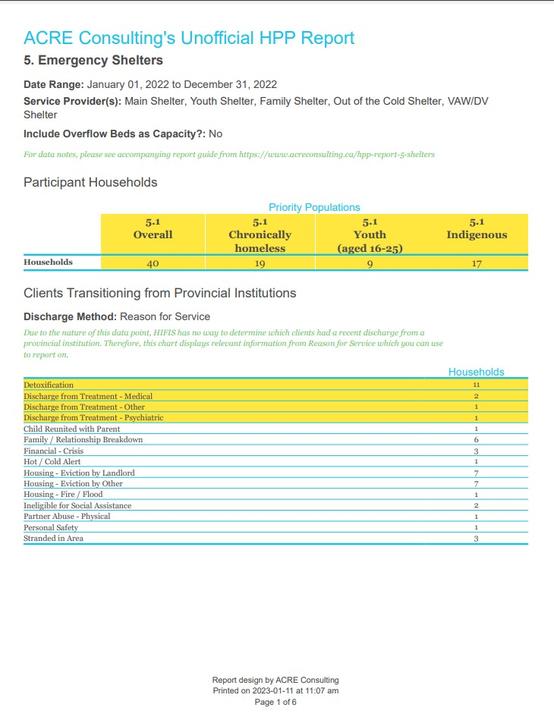
This report is intended to allow communities in Ontario who receive HPP funding to use HIFIS data to report out on the Emergency Shelters section of the HPP reporting requirements. Broadly, it reports on emergency shelter capacity and usage, broken down into priority population groups.
This is an unofficial report and is not endorsed by the Ontario MMAH.
This report is intended to allow communities in Ontario who receive HPP funding to use HIFIS data to report out on the Emergency Shelters section of the HPP reporting requirements. Broadly, it reports…
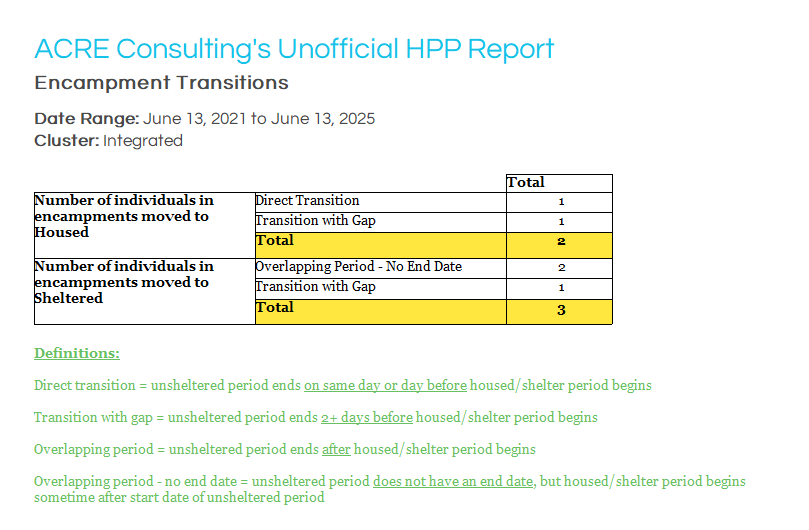
This report is intended to allow communities in Ontario who receive HPP funding to use HIFIS data to report on encampment transitions. This report shows the number of clients who moved from encampments to other housing types.
This is an unofficial report and is not endorsed by the Ontario MMAH.

Using HIFIS, but still keeping your BNL in Excel? Have a BNL in HIFIS, but not sure you're doing it right? Starting from scratch, and wondering if this HIFIS thing could work for your BNL? This is the document for you! In it, we outline all the best practices and minimum requirements to maintain a BNL in HIFIS, according to Reaching Home, the Ontario government, and the Canadian Alliance to End Homelessness.
Using HIFIS, but still keeping your BNL in Excel? Have a BNL in HIFIS, but not sure you're doing it right? Starting from scratch, and wondering if this HIFIS thing could work for your BNL? This is the…
Looking for more?

